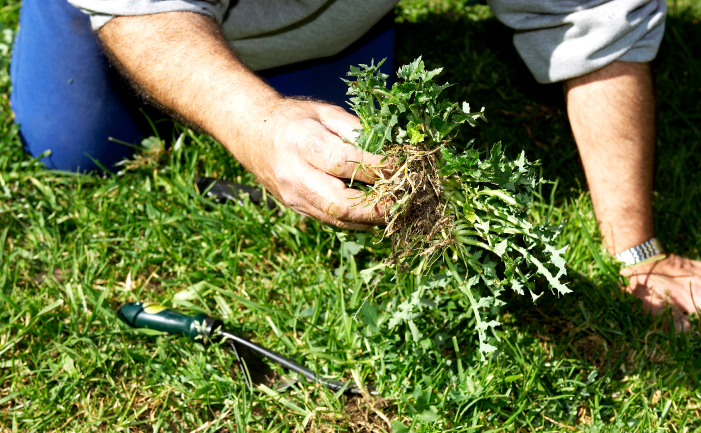Weeding is probably the worst part of gardening and you can waste vast amounts of time pulling weeds out of the garden. There are however a number of different methods that will address the problem.
1. Sprays
Spraying the weeds in the garden with Round Up or Zero doesn’t pose much of an environmental problem and will eradicate them from areas of the garden. Ready to use Round Up, (825mL) costs $10.35. There is also a new Yates weed brush for spot control of individual weeds in the garden costing $30. Warning: Never spray anything on a windy day, as spray may drift and kill plants you want to keep.
2. Ground covers
Once the weeds have been removed it is important to replace them with plants that will prevent the weeds growing back. The best tip for beating weeds is not to leave areas of the garden bare. Plants that are suitable for suppressing weeds include mondo grass, Grevillea ‘Royal Mantle’, Ajuga reptans, Hedera canariensis, Liriopes, Trachelopspermum asiaticum, Convolvulus sabatius.
3. Weed matting
Knitted or woven fabrics can be laid down before planting which will prevent the weeds growing through around the plants. It is best to burn a hole through the matting to allow the plant to grow through. The matting comes in 1m (3′) and 2m (6′) widths and is often black. The 3′ width matting costs about $2.10 a metre. The weed matting still needs to be covered with a decorative mulch. The matting is effective in preventing most weeds, except onion weed, but the decorative mulch can often slide off the matting and reveal the unattractive black matting.
4. Newspaper
Another option is to put down thick newspaper after weeding, wet it and cover it with mulch. It is a good way of recycling newspapers and the worms eventually eat it but by then most of the weeds are dead. However the newspaper prevents the normal gaseous exchanges from the soil into the environment.
5. Mulches
It is best to mulch over recently weeded garden beds. Alternatively spray the weeds with Round Up before mulching over the top of them. There is a wide range of mulches available but there is a definite trend towards lucerne mulch because of the extra benefits it gives to the soil. It has a pleasant smell and comes in convenient cubes to throw over the garden. One aspect of the lucerne mulches is that they can give a silvery appearance to the garden in the beginning but as they break down they are very good for the soil. Particularly good for roses or a cottage garden. They are also the best choice for vegetable gardens. Lucerne mulches break down in about three months in wet weather so the mulch may need to be reapplied as much as three or four times a year. Lucerne cubes cost about $20 per 25kg and chaff is $10 per 60L.
Recycled products
Most mulches available from nurseries and landscape suppliers are in fact recycled products. Recycled greenwaste from people’s gardens (grass clippings, prunings, leaves) is composted forming a rich, weedfree mulch available under various names such as Enviromulch or Grow Mulch. It is best used on roses, azaleas or vegetable gardens. It sells for around $10 for a 60L bag or $35 -$40 per cubic metre.
Mulch n Grow is a milled and composted pine bark which imparts a good look to formal gardens and enriches the soil and suppresses weeds. $10 for 60L.
Standard leaf litter costs around $5-$8 for 60L bag or $35 per cubic metre. It lasts nine to 12 months and looks good on a native garden.
Bark mulches (pine bark, Kauri bark etc) also look good on native gardens and are available plain or dyed with black, red or earth coloured vegetable dyes. Some states are recycling wooden pallets and colouring them with dyes. These bark and wood mulches can last up to 18 months but don’t contribute nutrients to the garden. They are priced around $6 per 60L or $30-$40 per cubic metre.



